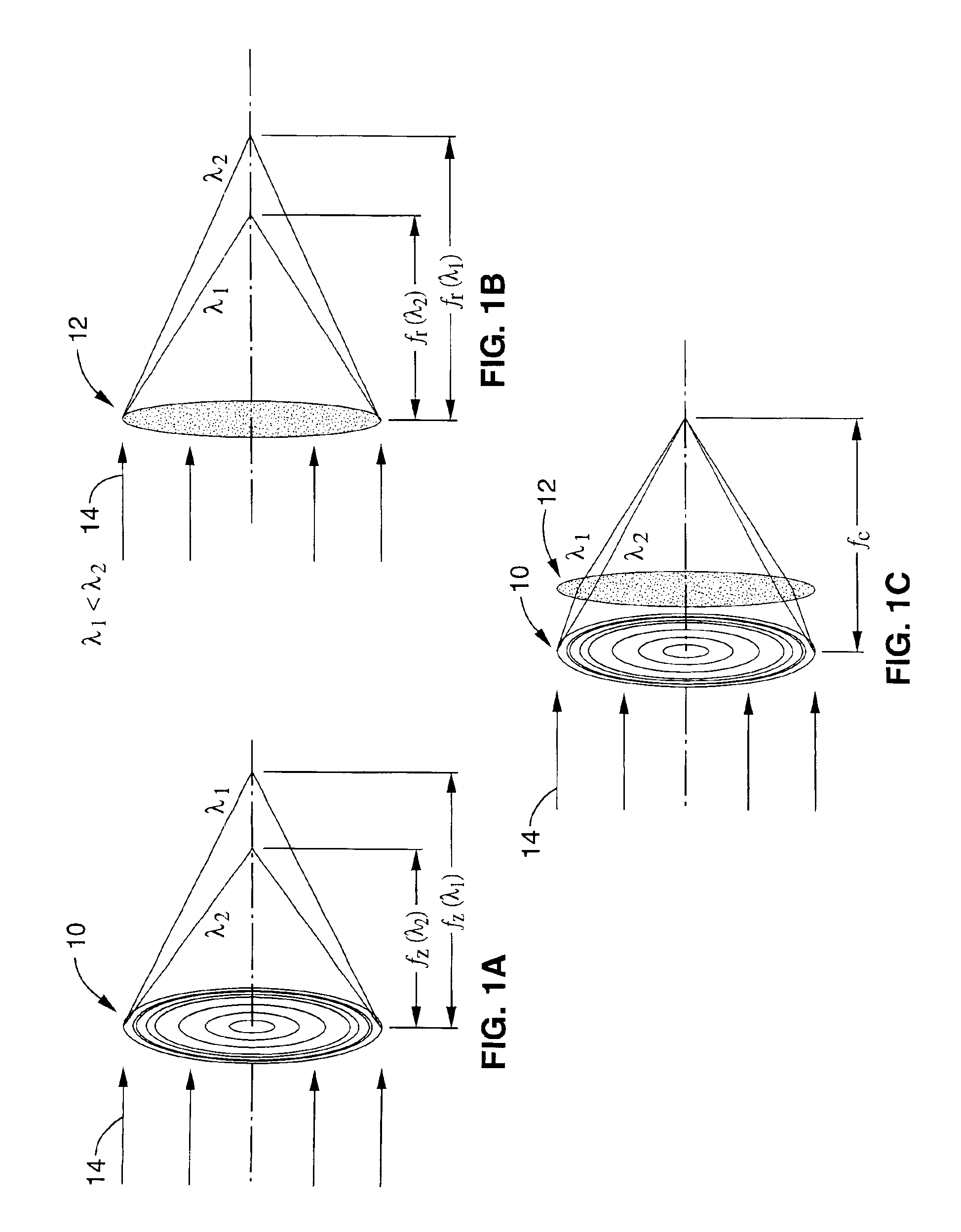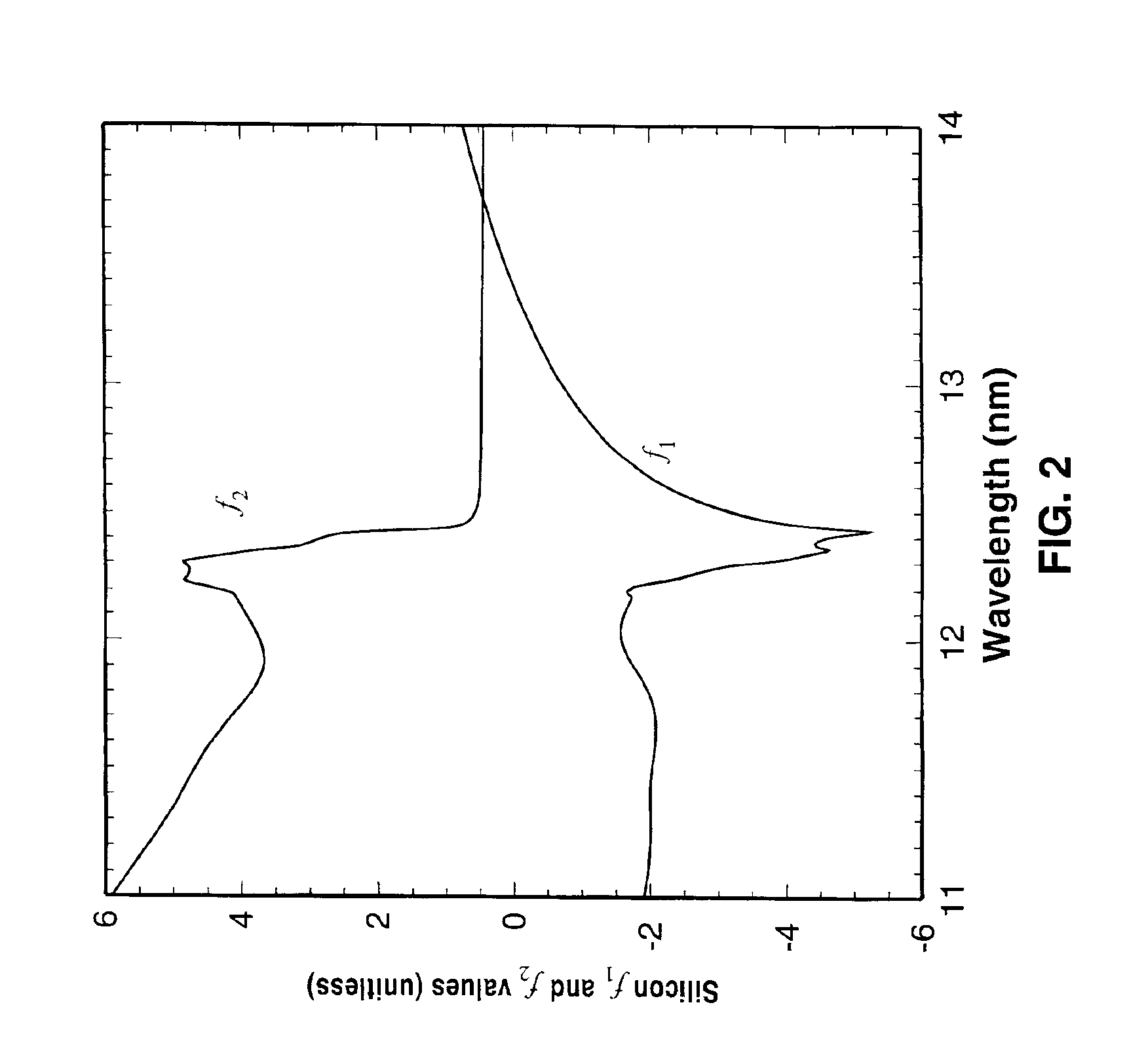Achromatic fresnel optics for ultraviolet and x-ray radiation
a fresnel optic and ultraviolet radiation technology, applied in the field of transmission type optics for short wavelength electromagnetic radiation, can solve the problems of difficult to make refractive lenses, difficult to achieve, and inefficient use of radiation produced in a typical x-ray source, so as to achieve enhanced amplitude and large achromatic bandwidth
- Summary
- Abstract
- Description
- Claims
- Application Information
AI Technical Summary
Benefits of technology
Problems solved by technology
Method used
Image
Examples
Embodiment Construction
[0033]Referring first to FIG. 1, the basic principles of the present invention can be seen. FIG. 1 shows a Fresnel zone plate 10 and a refractive lens 12. FIG. 1 shows that the zone plate 10 and lens are subjected to radiation 14 (e.g., EUV and x-ray) having two wavelengths, λ1 and λ2, where λ12. As shown, the Fresnel zone plate focal length ƒz varies such that ƒz(λ1)>ƒz(λ2). The present invention recognizes that it is possible to design a refractive Fresnel lens such that ƒr(λ1)r(λ2), and to form a compound AFO comprising the Fresnel zone plate 10 with the refractive Fresnel lens 12, where the combined focal length ƒc is the same for both wavelengths and, in addition, wherein the focal length for all wavelengths between λ1 and λ2 fall within the depth of focus (DOF). For purposes of the discussion herein, we refer to the central wavelength λ1+λ22
as the Designed Operating Wavelength (DOW). Accordingly, the present invention further recognizes that the optimal DOW of an AFO is near a...
PUM
| Property | Measurement | Unit |
|---|---|---|
| wavelengths | aaaaa | aaaaa |
| wavelengths | aaaaa | aaaaa |
| wavelengths | aaaaa | aaaaa |
Abstract
Description
Claims
Application Information
 Login to View More
Login to View More - R&D
- Intellectual Property
- Life Sciences
- Materials
- Tech Scout
- Unparalleled Data Quality
- Higher Quality Content
- 60% Fewer Hallucinations
Browse by: Latest US Patents, China's latest patents, Technical Efficacy Thesaurus, Application Domain, Technology Topic, Popular Technical Reports.
© 2025 PatSnap. All rights reserved.Legal|Privacy policy|Modern Slavery Act Transparency Statement|Sitemap|About US| Contact US: help@patsnap.com



